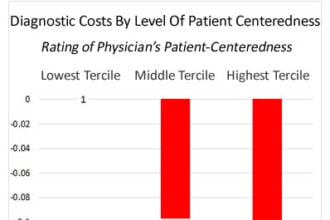 It’s good to see health care providers continue to work on strategies to reduce health care acquired infections.
It’s good to see health care providers continue to work on strategies to reduce health care acquired infections.
 It’s good to see health care providers continue to work on strategies to reduce health care acquired infections. Handwashing is a key component —but hospitals struggle to achieve compliance and are now turning to patients to be the bad cop, much to my dismay.
It’s good to see health care providers continue to work on strategies to reduce health care acquired infections. Handwashing is a key component —but hospitals struggle to achieve compliance and are now turning to patients to be the bad cop, much to my dismay.
A simple new strategy in intensive care units is showing promise: having doctors and nurses wear gloves and gowns with all patients, not just those who are known to have antibiotic resistant bacteria. It takes more time and costs a bit of money, but seems to cut down dramatically on MRSA infections without generating adverse events. The study is important because some infectious disease specialists have advocated moving away from gowns and gloves in order to reduce patient isolation and improve satisfaction.
While the results are promising the implications are not so clear cut.
The researchers did not find a statistically significant reduction in another bacteria, vancomycin-resistant Enterococcus, (VRE) or in a combination outcome of either VRE or MRSA ,which [study author] Harris says was surprising.
“However, different bacteria behave differently. Thus you can’t make a conclusion that it (gloves and gowns) should be used in all ICUs in the country, and similarly, you can’t conclude that it shouldn’t be used in any.”
Other strategies include bathing a patient with chlorhexidine and giving an intranasal nasal swab with mupirocin to prevent MRSA. Those are more convenient for caregivers than donning gloves and gowns, but there is concern that other resistant bacteria could emerge in response.
(controlling bacterial infections / shutterstock)








